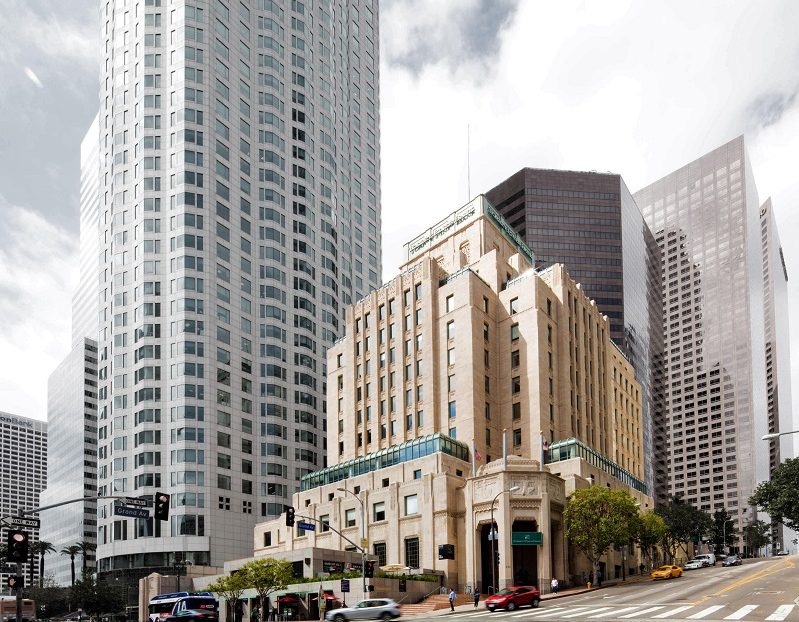The Office Repositioning Playbook
Which properties make the best candidates for makeovers? WiredScore founder & CEO Arie Barendrecht discusses three high-profile projects that are incorporating cutting-edge technology, re-imagined interior spaces and upgraded infrastructure.
By Arie Barendrecht
 Approximately half of the Class A office buildings in the United States were built before 1980. In markets with significant square footage under development, like Chicago, the Washington, D.C., metropolitan area, and New York City’s Tri-State region, the need to refresh and retrofit older office properties is more urgent than ever.
Approximately half of the Class A office buildings in the United States were built before 1980. In markets with significant square footage under development, like Chicago, the Washington, D.C., metropolitan area, and New York City’s Tri-State region, the need to refresh and retrofit older office properties is more urgent than ever.
Much has been made of what millennials want, and how TAMI (technology, advertising, media and information) tenants prioritize their leasing decisions. Yet the themes being talked about (walkability, openness, community) apply to people across industries and generations.
From a practical standpoint, occupiers want multiple dining options, not a corporate cafeteria, and access to a variety of spaces built to suit the way we work today. That means cafes where professionals can work alongside one another and host informal meetings; lounges or conferencing centers designed to accommodate events; and an untethered office configuration where employees never experience an internet disruption as they move across spaces. A building’s failure to meet these expectations can mean having difficulty competing with newer properties.
GOOD CANDIDATES
Which properties make the best candidates for makeovers? WiredScore founder & CEO Arie Barendrecht discusses three high-profile projects that are incorporating cutting-edge technology, re-imagined interior spaces and upgraded infrastructure.
What kinds of buildings are good candidates? Aging buildings located in central business districts, especially near public transit hubs are primed for a repositioning initiative. Buildings with persistent vacancies on lower floors are a good match for a certain kind of repositioning in particular: conversion of lower floors to house multi-level retail, restaurants, fitness, and coworking-style common areas.
Aesthetic improvements to revamp entrances, add new exterior lighting, improve signage, or refresh landscaping signal to current and potential tenants that repositioning is under way. Some owners also opt to reconfigure the built environment by creating outdoor space, re-imagining lobbies as event spaces with modern industrial finishes, carving out shared amenity spaces, and adding ground-floor retail with extended hours.
While not always evident to the naked eye, modernization of a building’s infrastructure adds significant value for occupiers and is a selling point in a tech-forward rebranding. Installing new (smart) elevators, upgrading HVAC systems, and adding sensors that regulate everything from temperature to lighting are a key elements of today’s office repositioning playbook.
WILLIS TOWER

Willis Tower, Chicago
The Blackstone Group paid $1.3 billion in 2015 for the Chicago property, which reigned as the tallest U.S. building for nearly four decades and still ranks second only to Manhattan’s One World Trade Center. A $500 million renovation aims to transform a concrete fortress into a catalyst for revitalizing the surrounding area. Plans call for adding 300,000 square feet of retail and entertainment across five levels at the building’s base, common entrances for tourists and tenants, and a glass-enclosed atrium for public events. New shared amenities spaces will be created throughout the building, including a café, a fitness center and spa, and a hotel-style sky lounge.
Also of note, the project includes a 5-year plan to upgrade the 110-story tower’s elevators, which will use smart technology to reduce elevator trip times and energy use by an estimated 33 percent.
Upgrades to the building’s digital connectivity have helped earn Platinum Wired Certified status. Tenants now have access to nine internet service providers, including fiber optic connections offering high speeds and bandwidth.
BALLSTON EXCHANGE

Ballston Exchange, Arlington, Va.
Jamestown LP acquired Ballston Exchange, two adjacent Class A office buildings in 2015, for $300 million. Located in Arlington, Va., the two-building complex is undergoing a $140 million renovation to modernize a single-tenant fortress connected by a pedestrian bridge into an office hub and retail destination, centered on a remodeled 12-story atrium, with seamless connection to the surrounding neighborhood of Ballston.
Jamestown has implemented digital improvements, including a Distributed Antenna System (DAS) to provide all tenants with seamless, reliable wireless cellular coverage within the building, and amenity Wi-Fi in the common areas. A mobile technology platform will allow tenants to tap into the Ballston Exchange ecosystem and connect them to on-demand amenities such as food delivery, building services, and community programming. Jamestown is using Wired Certification to highlight the tech improvements made at the property.
PacMutual Plaza

PacMutual Plaza, Los Angeles
PacMutual Plaza, located in Downtown Los Angeles, is a landmarked 460,000-square-foot campus composed of three interconnected buildings: Sentry Building (1922), Clock Building (1908), and Carriage House (1927). Rising Realty Partners acquired the property in 2012 for $60 million and embarked on a $25 million repositioning involving both an aesthetic and infrastructure revamp.
To make the building appeal to today’s coveted creative-class tenants, Rising Realty Partners’ repositioning plan included opening up an enclosed courtyard to pedestrian traffic, adding restaurants, creating large open-plan spaces throughout with exposed brick, and restoring original marble floors in common areas. Rising Realty Partners also spent over $100 per square foot on improvements to tenant spaces.
Concurrently, Rising Realty’s infrastructure improvements to the buildings earned the campus’ Wired Certified Platinum status, as one of only four properties in Los Angeles to receive that distinction. Rising Realty’s bet paid off. In 2015, they sold Pac Mutual for $200 million to Ivanhoe Cambridge and private equity firm Callahan Capital Partners.
The Takeaway
While tearing down and building from scratch has its appeal, investing in future-proofing an aging office building can have significant upside, for landlords, tenants, and the surrounding community.
Arie Barendrecht is the founder & CEO of WiredScore, the pioneer behind the international Wired Certification standard that evaluates and distinguishes best-in-class Internet connectivity in commercial buildings. Previously he worked as a consultant with the Boston Consulting Group in New York City where he focused on the technology and media industries.







You must be logged in to post a comment.